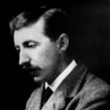The artful Dickens: tricks and ploys of the great novelist
Description
'One for your Christmas list … A feast of Dickensian knowledge' The Times 'This is a marvellous, endlessly illuminating book ... It doesn't go on the shelf alongside other critics; it goes on the shelf alongside Dickens' Howard JacobsonDiscover the tricks of a literary master in this essential guide to the fictional world of Charles Dickens. From Pickwick to Scrooge, Copperfield to Twist, how did Dickens find the perfect names for his characters?What was Dickens's favourite way of killing his characters?When is a Dickens character most likely to see a ghost?Why is Dickens's trickery only fully realised when his novels are read aloud? In thirteen entertaining and wonderfully insightful essays, John Mullan explores the literary machinations of Dickens's eccentric genius, from his delight in clichés to his rendering of smells and his outrageous use of coincidences. A treat for all lovers of Dickens, this essential companion puts his audacity, originality and brilliance on full display.
More Details
Table of Contents
From the Book
Similar Titles From NoveList
Similar Authors From NoveList
Published Reviews
Publisher's Weekly Review
Mullan (What Matters in Jane Austen?) deconstructs Charles Dickens in this incisive essay collection. Astute observations abound in 13 pieces that attempt to "do justice to Dickens's inventiveness, ingenuity, and experimentalism. The essay "Fantasising" examines the number of times "as if" appears as an idiomatic tic that "unlocks the novelist's fantastic vision of the sheer strangeness of reality." "Smelling" describes the grim "whiff" of London sewage and horse dung in Dickens's work, as well as the odors of his characters. "Changing Tenses" provides a chance to "share the sharpness of childhood memory," while "Naming" proves that Dickens's characters got their names from lists of advisers to the royal family. "Speaking" digs into Dickens's use of dialogue, and "Breaking the Rules" shows that the novelist's use of repetition was the "simplest and the best of his tricks." Mullan convincingly suggests that writers including Margaret Atwood, Ian McEwan, and Muriel Sparks draw from the best of Dickens's techniques--in fact, he writes, Dickens anticipated the "narrative experiments" of modern novelists. This superlative, fresh collection will please stalwart fans and bring new readers to the Dickens canon. (May)
Kirkus Book Review
A celebration of the Victorian novelist's cunning genius. Based on insightful close readings of Charles Dickens' novels, letters, and meticulously revised manuscripts, literary scholar Mullan offers ample evidence of the "technical boldness" and "experimental verve" of Dickens' prolific oeuvre. In discrete chapters, the author highlights more than a dozen characteristics that set Dickens apart from other writers, including the use of "fantastic analogy" to evoke "people's strangeness and self-contradiction"; the invention of comically apt names, some of which have entered the popular lexicon; the deployment of coincidences "to move the fancy, asking us to imagine what makes the improbable somehow plausible"; and the shift between past and present tense, which, Mullan asserts, anticipated modernist and postmodernist writers: "None of Dickens' narrative tricks is stranger or more audacious than this." Mullan highlights the literary techniques that shape the well-populated novels' quirky characters. Dickens, who once toyed with the idea of becoming an actor and admired performers who could use different voices, was able "to make a way of speaking comically distinct without being merely laughable." He closely attended to word choice, using clichés to his advantage, coining words and, Mullan reveals, snatching up colloquialisms, which he pitched into "orotund sentences." In addition, he paid attention to palpable details--odors, for example--writing "as if his nose were a sensitive instrument." For Dickens, smell became "a narrative device" that helped readers recall characters during the many months of a novel's serialization. Besides technical devices, Dickens had particular thematic interests: in ghost stories, for one--at the time "an undeveloped genre" that Dickens promoted--and in drowning, which became more than a useful plot mechanism but emblematic of a widely shared visceral fear. Although Mullan assumes a reader's familiarity with Dickens' many works, his ebullient analysis may well generate new fans. A brisk, authoritative look at a literary icon. Copyright (c) Kirkus Reviews, used with permission.
PW Annex Reviews
Mullan (What Matters in Jane Austen?) deconstructs Charles Dickens in this incisive essay collection. Astute observations abound in 13 pieces that attempt to "do justice to Dickens's inventiveness, ingenuity, and experimentalism. The essay "Fantasising" examines the number of times "as if" appears as an idiomatic tic that "unlocks the novelist's fantastic vision of the sheer strangeness of reality." "Smelling" describes the grim "whiff" of London sewage and horse dung in Dickens's work, as well as the odors of his characters. "Changing Tenses" provides a chance to "share the sharpness of childhood memory," while "Naming" proves that Dickens's characters got their names from lists of advisers to the royal family. "Speaking" digs into Dickens's use of dialogue, and "Breaking the Rules" shows that the novelist's use of repetition was the "simplest and the best of his tricks." Mullan convincingly suggests that writers including Margaret Atwood, Ian McEwan, and Muriel Sparks draw from the best of Dickens's techniques—in fact, he writes, Dickens anticipated the "narrative experiments" of modern novelists. This superlative, fresh collection will please stalwart fans and bring new readers to the Dickens canon. (May)
Copyright 2021 Publishers Weekly Annex.





























